New products at Crocus
by Sarah - January 23rd, 2010.Filed under: Crocus, New Products.
Crocus has these new items today
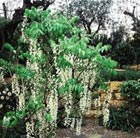
standard Chinese wisteria £99.99
Position: full sun or partial shadeSoil: fertile, moist, well-drained soilRate of growth: fast-growingFlowering period: May to JuneFlower colour: pure whiteOther features: velvety, green seed-pods in hot summers; all parts of the plant are harmful if ingestedHardiness: fully hardyPendant clusters of fragrant, pure white, pea-like flowers in May and June followed in hot summers by velvety, green seed-pods. This classic white Chinese wisteria looks wonderful trained as a small weeping tree. Renowned for its superior fragrance, it’s an ideal, fast- growing climber for covering a sheltered, sunny wall or strong pergola.Garden care: In the first season cut back sub-lateral shoots to two or three buds. During the first winter cut back laterals by one third and sub-laterals by two or three buds.This standard plant has a 110cm clear stem beneath a 45-60cm head.

riveted-diamond-trellis £29.99
Premium, super-strong, durable trellis made from high quality hardwoods or redwoods. Riveted with zinc plated rivets.
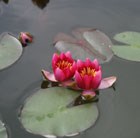
water lily £18.99
Position: full sunDepth of water: 45-75cm (18-30in)Rate of growth: averageUltimate spread: 90cm (36in)Height above surface: 0-10cm (0-4in) Flowering period: June to SeptemberHardiness: fully hardyShowy, cup-shaped burgundy-red flowers up to 12cm (5in) across with orange centres appear from June to September. The round, pale green leaves are bronze-tinted when young. This popular, red water lily is one of our recommended plants, since it’s ideal for a small pond. It is best planted at a depth of 45-75cm (18-30in). The shade cast by the foliage also helps to check the spread of algae.Garden care: Plant firmly in a hessian-lined aquatic planting basket filled with aquatic compost. Apply a 2.5cm (1in) top-dressing of pea shingle or gravel to prevent the top layer of the planting medium from clouding the water. The crown of the plant should protrude slightly above the surface of the planting basket. Raise the basket on bricks when the plant is young, gradually lowering them as the plant matures, so that the leaves float on the surface.

10 old fashioned sweet peas £12.99
Please note that as we grow these sweet peas especially for you, we need to take full payment when you place your order so as to reserve stock for you. The sweet peas plants will then be despatched to you during April as they become ready. If you want other items on your order delivered beforehand, select split delivery in the wheelbarrow when placing your order.The sweet pea was introduced to the UK in 1699 when a Sicilian monk, Francis Cupani, sent seeds of this fragrant annual to Dr Robert Uvedale, a teacher from Enfield, Middlesex. Thanks to its gorgeous scent the sweet pea gained popularity throughout the centuries. Over four hundred years later the range of colours has increased enormously, but many of the modern varieties lack the scent of their older uncles and aunts.This collection of rare, old fashioned sweet peas contains ten plants in individual, 8cm pots from a selection of the following varieties:America – bred in 1896 has flowers white striped with redAnnie B Gilroy – cerise blooms and was bred in 1909Apricot Sprite – attractive shades of glowing apricotCountess Cadogan – bred in 1899 is violet and blue bicolour flowersCream Southbourne – luscious cream flowersCupanis Original – the original plant from 1699, has purple and blue bicolour flowersHenry Eckford – bred in 1906 has bright orange bloomsJanet Scott – bright pink flowers and was bred in 1903Lord Nelson – bred in 1907 has flowers of navy blueMrs Collier – bred in 1907 has cream bloomsMatucana – maroon and purple flowers introduced into the UK in 1699Painted Lady – lovely pink and white bicoloured flowers and was bred in 1737Prima Dona – pink self-hooded flowers and was bred in 1896Violet Queen – bred in 1877 has violet self-hooded flowersWinston Churchill – rich crimson red bloomsPrincess Elizabeth – salmon pink with creamy buff bloomsMrs R. Bolton – light pink bloomsAir Warden – scarlet cerise bloomsGeranium Pink – cerise pink , scuffed with orange bloomsLeamington – pale sky blue bloomsRed Ensign – scarlet red bloomsWhite Ensign – pure white bloomsBlue Velvet – deep sea blue flowersThis mixed collection has been put together specifically for Crocus by our favourite sweet pea specialist. Each plant will have been cut back once so that you get a nice, bushy plant that should be at least 15cm (6in) tall.Plant Care: To make sure you keep the plants in top condition spray regularly with a fungicide as all sweet peas are prone to mildew and feed with a high potash, such as Tomorite for plenty of flowers. Don’t forget to keep cutting the flowers so that you get plenty more! Please note that the individual plants are not labelled, and as Sweet Pea the annuals, they will only last for one summer

everlasting sweet pea £8.99
Position: full sun or partial shadeSoil: fertile, humus-rich, well-drained soilRate of growth: average to fast-growingFlowering period: June to SeptemberHardiness: fully hardyEver popular, this plant is smothered in showy sprays of scarlet, sweet pea-like flowers from June to September among grey-green leaves. A vigorous, perennial climber, it looks lovely scrambling over a sunny wall or through a hedge or evergreen shrub, although initially it needs to be tied into supports. Unlike the annual sweet pea, it has no fragrance.Garden care: Incorporate lots of well-rotted organic matter in the planting hole. Pinch out the shoot tips to encourage bushy growth and tie in new shoots to a support. Cut back the plant to ground level in early spring.
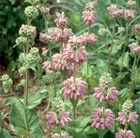
phlomis £6.99
Position: full sunSoil: any fertile, well-drained soilRate of growth: average Flowering period: JulyHardiness: fully hardyAn erect perennial with distinctive whorls of tubular, lilac-purple flowers in July strung like beads at intervals on tall stems above woolly, yellow-grey leaves. After the flowers fade, this plant retains a dramatic presence in the border, with architectural seedheads that look wonderful among late-flowering perennials and grasses. Try it in small groups in the middle of a herbaceous or mixed border, and plant low-growing perennials in front to hide the ‘legs’ of the plant. Garden care: In mid-spring shorten any frost-damaged stems, cutting back to just above a healthy bud. Remove any weak or diseased shoots, cutting cleanly back to the base.
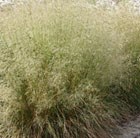
tufted hair grass £6.99
Position: full sun or partial shadeSoil: dry to moist, neutral to acid soilRate of growth: average to fast-growingFlowering period: June to August Flower colour: bright silvery yellowHardiness: fully hardy The neat, densly tufted evergreen foliage makes this a perfect grass for the wildflower meadow. The dainty silver-tinted, purple spikelets appear like clouds in summer, and are a real feature well into the autumn. These are easy and reliable plants that will tolerate some shade.Garden care: Remove the faded flower-heads in late winter before new growth appears. In warm areas the plant has a tendency to self-seed freely. Where this is the case remove unwanted seedlings as part of routine border maintenance
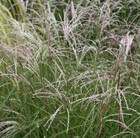
purple moor-grass £6.99
Position: full sun or partial shadeSoil: any moist but well-drained, preferably acid to neutral soilRate of growth: average Flowering period: May to SeptemberHardiness: fully hardyAs the name suggests, this grass resembles a living fountain. The arching leaves for a strong clump of foliage from which airy, see-through flowers rise in summer. These flowers emerge green and fade to shades of purple-brown then yellow, and last well into the autumn. This is a great plant for adding texture and movement into the border in summer – and the seedheads provide interest late into the year. This variety has been bred in Germany, but it has British parents, so is very happy in our climate, as long as the soil is not too dry.Garden care: Cut back in early spring before the new foliage appears.
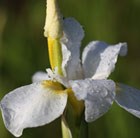
Siberian iris £5.99
Position: full sun or partial shadeSoil: well-drained, moderately fertile, neutral to slightly acid soilRate of growth: averageFlowering period: May and JuneHardiness: fully hardyBeautiful, pure white flowers with unusual, rounded, flared petals and a yellow base appear in May and June among slender, bright green, strappy leaves. Like all Siberian flag irises, this is a clump-forming plant that needs space to spread out and prefers a moist, neutral to slightly acid soil in sun or partial shade. It loooks its best planted in bold drifts beside water and allowed to naturalise and is particularly useful on difficult banks where it will help to prevent erosion and over time will form large clumps. It can also be planted in a pot as a marginal plant for a pond.Garden care: Plant in soil that has been improved with well-rotted manure or garden compost and do not allow to dry out, particularly as the plant is getting established. If planted in a container, it will need dividing and repotting every couple of years in spring.






